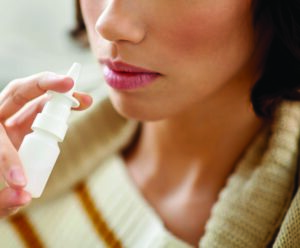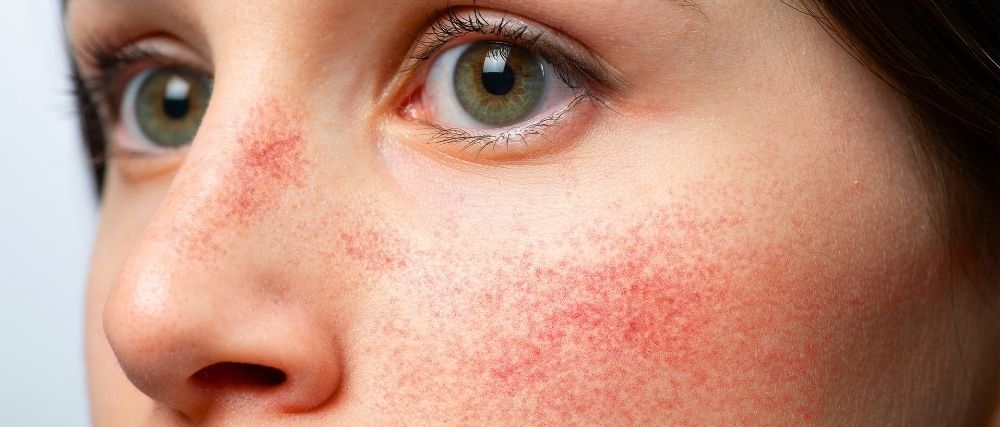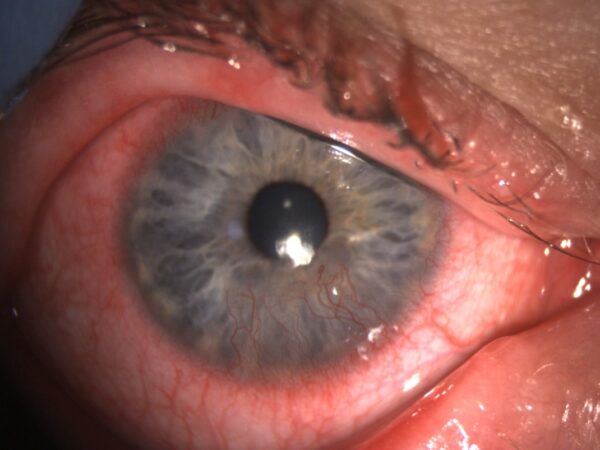Management of Seasonal Allergies in Pregnancy
Pregnancy is a special time; however, it is estimated that 65% of pregnant women experience nasal symptoms during their pregnancy. Uncontrolled Hay Fever and Allergic Rhinitis, can affect pregnancy by impacting sleep, stress, asthma control and quality of life.1,2 Effective management of symptoms is vital to reduce the need for medications.
What is Rhinitis?
Rhinitis is characterised by a runny nose, nasal congestion and a post-nasal drip. Feelings of fatigue can also be significant and can have a considerable impact on quality of life.3
 Pregnancy Rhinitis
Pregnancy Rhinitis
Pregnancy rhinitis affects 20-30% of pregnancies and can make you feel like you’ve got allergic symptoms: sneezing, nasal congestion and a runny nose.4 This happens due to hormonal changes, not allergens. Blood flow increases around the body to keep up with your baby’s demands. When the blood flow increases in your nose, the blood vessels become inflamed and swollen. These symptoms generally disappear within the first two weeks after delivery.2,4
Allergic Rhinitis
Seasonal allergies usually occur during Spring and Summer. In pregnancy, your seasonal allergies may improve, however one study found that 34% of pregnant women experienced new or worsening symptoms.5 Typical symptoms of seasonal allergies include:
- Itchy or watery eyes
- Itchy nose, mouth and throat
- Sneezing and coughing
- A blocked or runny nose
You might also get a headache, feel tired or have shortness of breath. If you have asthma, seasonal allergies may trigger an asthma attack. Asthma is challenging for up to 8% of pregnant women and can affect the outcome of pregnancy.6 Uncontrolled rhinitis may in fact exacerbate co-existing asthma during pregnancy, so management is really important.2
Treating allergy symptoms – prevention is better than cure
Minimising exposure to allergens will result in reduced levels of histamine in the body and in turn reduced allergy symptoms.
If you’re not sure what’s causing your symptoms, try to keep a diary of when you notice symptoms worsening. What time of day? Which month? Indoors or outdoors, day or night, at home or somewhere else? The most common allergens include pollen, mould spores, house dust mites and animal dander.
Pollen
Plants produce pollen as part of their reproductive cycle at different times throughout the year. Pollen is not dangerous, but your immune system might be sensitive to it, which can lead to allergy symptoms. Symptoms are triggered by airborne pollen, such as tree, grass or weed pollen. Here are some useful tips to help minimise exposure to pollen:
- Close your windows
- Stay indoors during peak pollen times
- Shower after being outside, wipe down pets after being outside
- Wear wrap-around glasses
- Dry clothes inside
- Use a protective Ectoin-based nasal barrier
Mould Spores
Moulds are a type of fungi which produce spores that can trigger an allergic reaction, particularly if you have Asthma or COPD. Moulds often grow in damp environments, such as in your bathroom or kitchen.
- Keep windows open during the day
- Fix sources of damp and condensation i.e. Drains
- Use anti-mould on sinks and baths monthly
- Remove clothes from dryer immediately
- Use an air purifier and dehumidifier
- Use a protective Ectoin-based nasal barrier
House Dust Mites
House dust mites are tiny creatures that live in our homes, so it is difficult to completely avoid exposure to them. However you can take steps to reduce your exposure.
- Vacuum with a HEPA Filter
- Damp dust regularly
- Change bedding weekly, and hot wash
- Use dust covers for pillow and mattress
- Remove carpets, cushions and soft toys from bedroom
- Consider an air purifier in bedroom
- Use a protective Ectoin-based nasal barrier, especially at bedtime
Animal Dander
If you have an allergy to pets, it is usually caused by saliva on the animal’s fur. They can also carry other allergens such as dust and pollen.
- Wipe pets down if they’ve been outside
- If you develop a new allergy to your pet, try to restrict the rooms they are allowed into, and do not allow them in your bedroom
Non-Medicated Treatments
It is important to use non-pharmacological options in pregnancy where possible, particularly in the first trimester. Natural treatments can often be as effective as medication.
Saline Nasal Irrigation
Saline nasal irrigation, i.e. Neil-med, is an effective way to directly cleanse the nasal cavity and it physically removes any allergens.7
Other natural remedies include:
Allergy Cold Therapy Masks
10 minutes can bring down inflammation around the eyes or the nasal cavity.
Nasal Strips
Sleeping slightly upright and using nasal strips when you sleep may also reduce a stuffy nose.2
Medications Safe To Use In Pregnancy
Intranasal Corticosteroid Sprays
Intranasal corticosteroid sprays are first-line treatment for rhinitis and are highly effective.3 The newer generation sprays including Fluticasone Propionate and Mometasone Furoate are safe in pregnancy.2,3
Oral Antihistamines
Oral antihistamines are the second-line treatment option, but are less effective.3 Chlorphenamine, Piriton is suitable for use in pregnancy. However, it has a sedating effect, therefore Loratadine and Cetirizine are typically preferred.10
What To Avoid
Avoid using nasal decongestants that contain Pseudoephedrine or Phenylephrine, such as Sudafed®, as these can affect your milk supply. Intranasal antihistamines and oral corticosteroids should also be avoided in pregnancy. They are only used in cases of severe uncontrolled rhinitis.2 If your symptoms are severe, your doctor may review your symptoms and suggest the safest options available.
Immunotherapy
Maintenance of immunotherapy during pregnancy is safe. However, the initiation of allergen-specific immunotherapies should be avoided.11
Rhino-Light Therapy
Phototherapy is well established for skin conditions and is now being used to manage rhinitis. Rhino-light is safe during pregnancy and is often the preferred treatment in pregnancy as it reduces the need for medication. Rhino-light uses 3 types of light to reduce histamine release from mast cells and destroys the white blood cells involved in the allergic response.
Vaginal Delivery & Breastfeeding
Vaginal delivery and breastfeeding have a beneficial effect on baby’s gut bacteria and protect against allergy development, particularly Bifidobacterium Breve, a strain commonly found in breastfed infants and human milk.14 Exposure to antibiotics in the third trimester or early life can have a significant impact on the allergy/asthma status of children.
A recent meta-analysis found that maternal antibiotic use might increase the risk of asthma/wheeze and eczema/atopic dermatitis, but not food allergy, in children.15 Nevertheless, the appropriate use of antibiotics during pregnancy is important, and healthcare professionals should be selective when prescribing antibiotics in pregnancy.
What Can You Do In Pregnancy To Reduce Allergy Risk For Your Baby?
Healthy Diet & Lifestyle
To ensure you and your baby stay healthy, it is important that you take care of yourself and maintain a healthy diet and lifestyle, including taking pregnancy supplements and vitamins. Recent research has shown that a pregnancy diet rich in Vegetables, Yogurt, and Vitamin D can reduce allergy development in babies.12
Exposure To Farms
Numerous trials have shown that maternal exposure to farm animals and hay during pregnancy results in increased numbers of cord blood Regulatory T cells (Treg), which reduces allergy risk in children, so head out to the countryside when you can.13
References:
- Powell H, Murphy VE, Hensley MJ, Giles W, Clifton VL, Gibson PG. Rhinitis in pregnant women with asthma is associated with poorer asthma control and quality of life. J Asthma 2015; 52(10): 1023-30.
- Schatz M. Recognition and management of allergic disease during pregnancy. UpToDate. Last updated: Sept 2020. Accessed via: https://www.uptodate.com/contents/recognition-and-management-of-allergic-disease-during-pregnancy. Last accessed on: May 20, 2021.
- Scadding GK, Kariyawasam HH, Scadding G, et al. BSACI guideline for the diagnosis and management of allergic and non-allergic rhinitis (Revised Edition 2017; First edition 2007). Clin Exp Allergy 2017; 47(7): 856-89.
- Ellegard EK. Clinical and pathogenetic characteristics of pregnancy rhinitis. Clin Rev Allergy Immunol 2004; 26(3): 149-59.
- Schatz M, Zeiger RS, Falkoff R, Chambers C, Macy E, Mellon MH. Asthma and allergic diseases during pregnancy. In: Adkinson NF, Jr, Bochner B, Burks AW, Busse WW, Holgate ST, Lemanske RF, et al., editors. Middleton’s allergy principles and practice. Philadelphia, PA: Elsevier, 2014; p.951-969.
- Weinberger, S.E. et al. Asthma in pregnancy: Clinical course and physiologic changes. UpToDate. Late Updated March 2020. Accessed via: https://www.uptodate.com/contents/asthma-in-pregnancy-clinical-course-and-physiologic-changes. Last Accessed: May 20, 2021.
- Garavello W, Somigliana E, Acaia B, Gaini L, Pignataro L, Gaini RM. Nasal lavage in pregnant women with seasonal allergic rhinitis: a randomized study. Int Arch Allergy Immunol 2010; 151(2): 137-41.
- Werkhäuser N. et al (2014). Treatment of Allergic Rhinitis with Ectoine Containing Nasal Spray and Eye Drops in Comparison with Azelastine Containing Nasal Spray and Eye Drops or with Cromoglycic Acid Containing Nasal Spray. Journal of Allergy, 2014; 1-13.
- Allegri P. et al (2014). Retrospective study to evaluate the efficacy on vernal kerato-conjunctivitis (VKC) of 2% Ectoine versus 0.05% ketotifen eye-drops. Investigative Ophthalmology and Visual Science; 55(13): 2492.
- Middleton PG, Gade EJ, Aguilera C, et al. ERS/TSANZ Task Force Statement on the management of reproduction and pregnancy in women with airways diseases. Eur Respir J. 2020; 55(2): 1901208.
- Shaikh WA, Shaikh SW. A prospective study on the safety of sublingual immunotherapy in pregnancy. Allergy. 2012; 67(6): 741-743.
- Venter C, Palumbo MP, Glueck DH, Sauder KA, O’Mahony L, Fleischer DM, Ben‐Abdallah M, Ringham BM and Dabelea D, 2022. The maternal diet index in pregnancy is associated with offspring allergic diseases: the Healthy Start study. Allergy; 77(1): pp.162-172.
- Schaub B, Liu J, Höppler S,Schleich I, Huehn J, Olek S, Wieczorek G. et al., Maternal farm exposure modulates neonatal immune mecha-nisms through regulatory T cells. J. Allergy Clin. Immunol. 2009; 123: 774–82.
- Cukrowska B, Bierła JB, Zakrzewska M, Klukowski M and Maciorkowska E, 2020. The relationship between the infant gut microbiota and allergy. The role of Bifidobacterium breve and prebiotic oligosaccharides in the activation of anti-allergic mechanisms in early life. Nutrients; 12(4): p.946.
- Zhong Y, Zhang Y, Wang Y and Huang R, 2021. Maternal antibiotic exposure during pregnancy and the risk of allergic diseases in childhood: a meta‐ Pediatric Allergy and Immunology; 32(3): pp.445-456.
Latest Articles




HCP Popup
Are you a healthcare or eye care professional?
The information contained on this website is provided exclusively for healthcare and eye care professionals and is not intended for patients.
Click ‘Yes’ below to confirm that you are a healthcare professional and agree to the terms of use.
If you select ‘No’, you will be redirected to scopeeyecare.com
This will close in 0 seconds